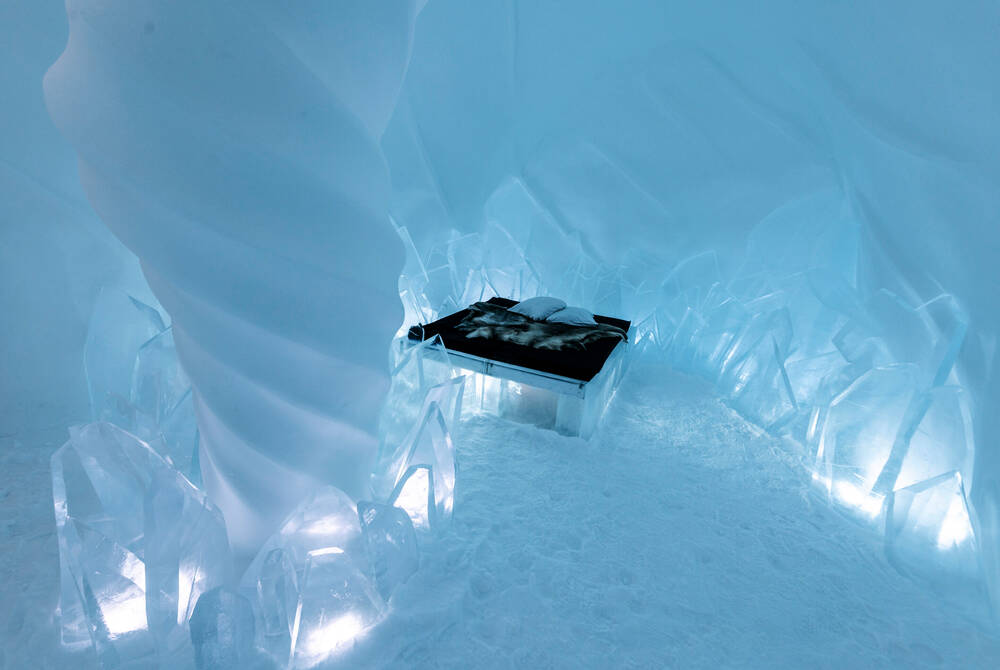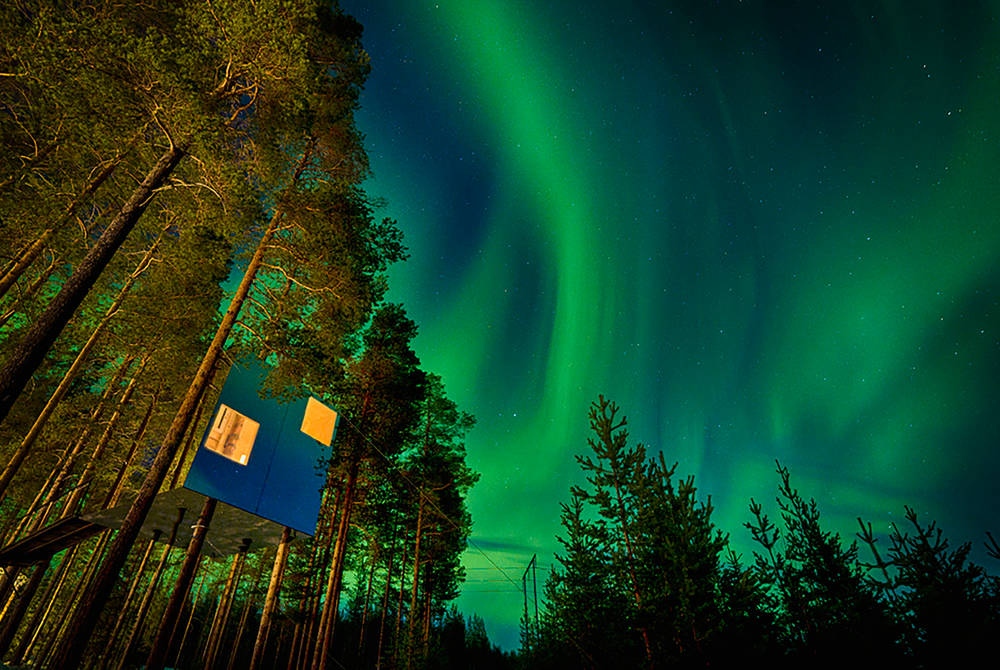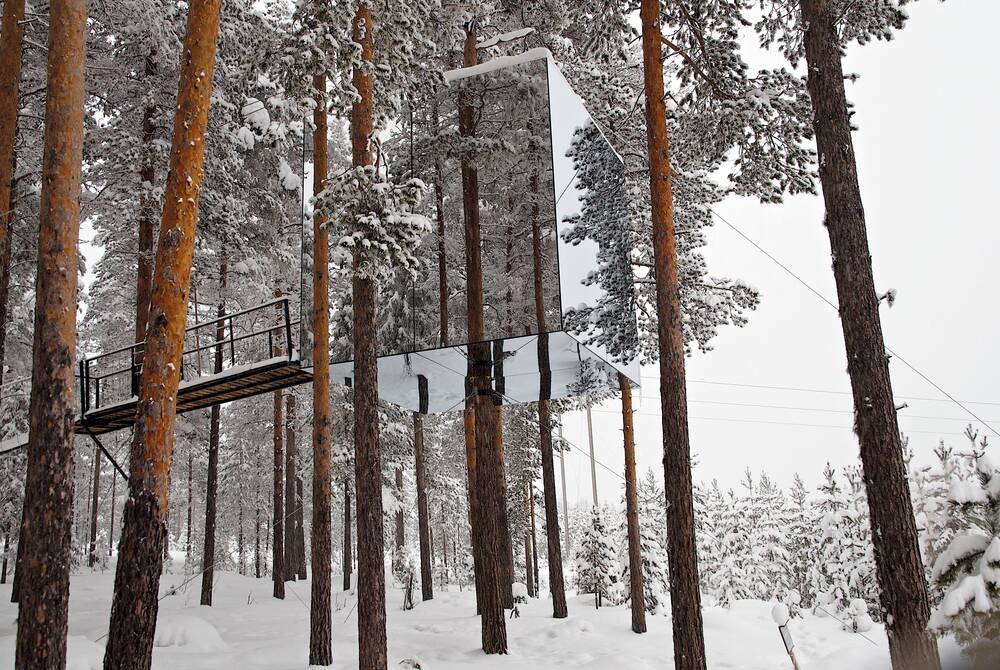Lapland may be most commonly associated with northern Finland, but this region, known as Sápmi by the indigenous Sámi people – actually encompasses the northern reaches of Sweden and Norway as well. While Rovaniemi (Finland) and Tromso (Norway) have firmly established themselves as major hubs for winter tourism in the Arctic, Swedish Lapland is often overlooked by international visitors, despite offering many of the same exhilarating experiences and numerous standout attractions that you won’t find anywhere else. It tends to be more affordable, too, making it an excellent alternative to its ever popular neighbouring Nordic countries. To point you in the right direction, here’s everything you need to know if you’re considering a trip to Swedish Lapland.
Browse Swedish Lapland holidays
How to get there
Although Swedish Lapland currently isn’t served by direct flights from the UK, getting there is still very straightforward. The easiest way is to fly to Stockholm and take a short internal connecting flight to one of two main cities in the north – Luleå (1 hour 15 mins) or Kiruna (1 hour 30 mins). Luleå is a coastal city on the shore of the Bothnian Bay, just south of the Arctic Circle, while Kiruna is Sweden’s northernmost city, some 200 kilometres north of the Arctic Circle. The latter is currently being moved, piece by piece, to a new location as part of a multi-decade project due to mining activity destabilizing the ground on the fringes of the historic centre.
It’s also possible to take the overnight train from Stockholm to Luleå or Kiruna, or you could even fly to Narvik in Norway (served by new direct flights from London Gatwick this winter) and take the train across the border, passing through Abisko en route to Kiruna – a wonderfully scenic rail journey of just under three hours.
When to go

Reindeer in Swedish Lapland (Image: Staffan Widstrand/imagebank.sweden.se)
As Swedish Lapland lies between latitudes of 64-69°N, it experiences stark contrasts between seasons. During the summer months, there’s no true darkness, and north of the Arctic Circle (66.33°N) the sun doesn’t set at all from late May to mid-July. It can get surprisingly warm, with temperatures typically hovering in the mid-to-high teens and even exceeding 20°C – it’s the presence of mosquitoes that’s the biggest challenge at this time of the year.
Autumn is a beautiful but relatively brief season in Sweden’s far north, as the landscapes transform into a glorious palette of gold, amber and auburn as the days rapidly shorten and temperatures begin to drop. This is a particularly good time to see the Northern Lights due to the equinox effect and often plenty of clear skies in September and October (though this varies year on year). Snow will usually arrive in October and become increasingly frequent throughout November, until a thick, white blanket covers the entire region, lasting all the way through to April or even early May.

Northern Lights at Brändön Lodge, Swedish Lapland
From early December to early January, the northernmost part of Swedish Lapland is plunged into Polar Night as the sun doesn’t rise for around four weeks. It’s not pitch black throughout this period, though, as there’s still a twilight period for several hours around the middle of day, with a soft, blueish light. Winter temperatures tend to stay well below zero, and can drop below -20°C during colder periods – though this needn’t deter you so long as you wear the appropriate thermal clothing. February and March is perhaps the sweet spot to visit, giving you a balance of ample daylight, reliable snow cover for winter activities and strong chances of seeing the Northern Lights.
How long to go for
It all comes down to personal preference, but most trips to Swedish Lapland last in the region of four to five nights. This allows ample time for numerous excursions and to get a proper feel for the region’s natural beauty without feeling like you’re cramming too much in. Bear in mind that planning an extra night or two will give you more flexibility to move activities around based on the weather conditions, while the longer you stay, the better your chances of being able to see the Northern Lights. It’s also certainly possible to plan a longer trip, perhaps combining stays in both Luleå and Kiruna, or even including a night or two in Norway.
Where to stay

Arctic Retreat in Swedish Lapland
Swedish Lapland is home to a vast array of accommodation options to suit a wide range of tastes and budgets. If you’d rather be based in a city, close to plenty of bars and restaurants, the Clarion Hotel Sense is a superb choice in Luleå, while the likes of Brändön Lodge and Sörbyn Lodge are ideal if you’re after a traditional Scandinavian log cabin experience in a peaceful wilderness setting. Arctic Retreat is another standout option, with ultra-stylish, modern cabins featuring private hot tubs and exquisite full-board dining as part of the experience. From winter 2024/25, you can also stay in a glass igloo at Ice and Light Village, also within easy reach of Luleå.

Camp Ripan, Kiruna, Swedish Lapland
In Kiruna, Camp Ripan makes a fabulous base for a winter getaway, with its Aurora Spa and restaurant specialising in authentic Sámi cuisine. And of course, there’s the iconic ICEHOTEL in Jukkasjärvi, which draws visitors from all around the world to stay in its hand-carved ice rooms, as well as the spectacular Treehotel and the Arctic Bath retreat, featuring Scandi-chic cabins and a floating spa on the Lule River. You could even combine a stay in all three of these extraordinary properties on our ‘Swedish Design Icons’ itinerary.
Things to do

Husky sledding in Swedish Lapland (Anna Öhlund/imagebank.sweden.se)
Husky sledding and snowmobiling are the two most popular winter activities in Swedish Lapland, both of which allow you to explore the region’s vast wilderness, from frozen lakes and gently rolling fells to snow-blanketed forests and wide open tundra. Bear in mind that a full driving license is required in order to drive a snowmobile. On husky safaris, typically one person will be the ‘musher’ driving the sled while the other sits below. Most tour operators will provide you with extra-warm thermal suits and goggles before you head out on a husky safari or a snowmobile ride, while hot drinks and snacks are also often included. Other popular winter excursions include Sámi reindeer experiences, snowshoeing and ice fishing.
Seeing the Northern Lights, meanwhile, is among the highlights of any trip in Scandinavia’s far north – and Swedish Lapland is as good a place as any to do so. The whole region lies beneath the auroral oval (the geographical zone where the Northern Lights are most frequently active), so on dark, clear nights between September and early April, there’s a strong chance that you’ll see them. During intense displays, you simply just have to look up to see them, but often they’re more subtle to the naked eye. The biggest barrier to seeing the Northern Lights is cloud cover, which is why joining an aurora hunting excursion with a local guide is the best way to maximise your chances, as they’ll plan a route to try and find clear skies based on the weather conditions at the time. Abisko, around an hour’s drive north of Kiruna, is renowned as one of the best places in the world to see the Northern Lights, as it has more clear skies than most other areas due to the ‘blue hole’ effect which sees the surrounding mountains regularly keeping the clouds at bay.

Church Town of Gammelstad, Luleå
If you’re staying in Luleå itself, be sure to check out the UNESCO World Heritage-listed Church Town of Gammelstad and, when they’re open (usually January to April) take a walk along the ice roads that emerge when the sea freezes over, connecting the city centre with the islands of the Luleå Archipelago. Kiruna is also a fascinating place to explore, as it’s currently being relocated several kilometres away, building by building, due to iron ore mining activity which threatens the solidity of the ground beneath much of the existing town. The new, modern city centre is gradually taking shape, but you can still visit the historic part of Kiruna, whose streets are lined with a colourful array of quintessentially Swedish timber houses.
What to eat

Traditional Lappish cuisine at Camp Ripan, Kiruna
Outdoor adventures may be Swedish Lapland’s most powerful draw, but embracing the local cuisine will give you a deeper appreciation of the region’s cultural traditions and lifestyle. The most authentic restaurants place a strong emphasis on seasonal ingredients and recipes inspired by the Arctic nature. These tend to feature the likes of reindeer, moose and fresh fish from the region’s lakes, such as salmon, trout and Arctic char, often served with almond potatoes (a small, slightly sweet variety of potatoes grown in northern Scandinavia). Wild mushrooms and berries foraged from the forests and the marshlands are also integral components of the regional pantry – especially lingonberries and cloudberries, which make delicious jams, syrups and accompaniments to creamy desserts. In cities like Luleå and Kiruna, you’ll also find a reasonable spread of international restaurants covering everything from pizzas and burgers to sushi and Thai cuisine.















